
2020 was a lot of things, a year we’ll always remember.
But no matter how you survived the year – and lots of people, sadly, did not – one thing binds us all together – our emotions. Events like 9/11 and the Apollo moon landing can bind us. But these are events that come and go. Similar to an event like World War II or the Great Depression, the COVID pandemic has been a sustained, challenging event for everyone on the planet.
It has been a shared experience that has been terrifying and uncomfortable due to this previously unknown virus. Even with three vaccines approved here in the States, there is that fear it will not be long-lasting or that variants will neutralize its protective abilities.
In short, it’s been an emotional time. For people who always wear their emotions on their sleeves, this event has been off the charts. But for others who tend to keep their feelings locked up tightly, COVID has brought out “the feels” in all of us. “We’re all in this together” was one of the early rallying cries (even though we’ve never been more divided), and like it or not, it is the truth.
As a result, you’d think that marketing messaging would change. Some brands have used their creative to remind us how their product solves a COVID problem – being safe and alone.
And Lincoln’s “sanctuary” campaign addresses that emotional hot button. The spots don’t talk about horse power, brakes, or even Apple CarPlay. But they do tempt us with a vehicle that helps us get away from it all – even someone with a high-powered lifestyle like Serena Williams:
https://www.youtube.com/watch?v=UHOhaW821Yo
In just a few weeks, we’ll be sharing the results of Techsurvey 2021 with you. This is our first look at what we’re calling “The Year of COVID.” Last year’s study was conducted in January and February – just before it all hit the fan. So, TS 2021 provides a great look at how COVID has changed media usage habits – specifically, radio listening – as well as the emotional state of the audience.
Every year, we ask respondents who listen to any radio – and this year, it was 40,000+ respondents strong – why they tune in. And we provide them a lengthy list of possible reasons, and ask them to tell us whether each is a main reason, secondary reason, or no reason at all for spending time with broadcast radio.
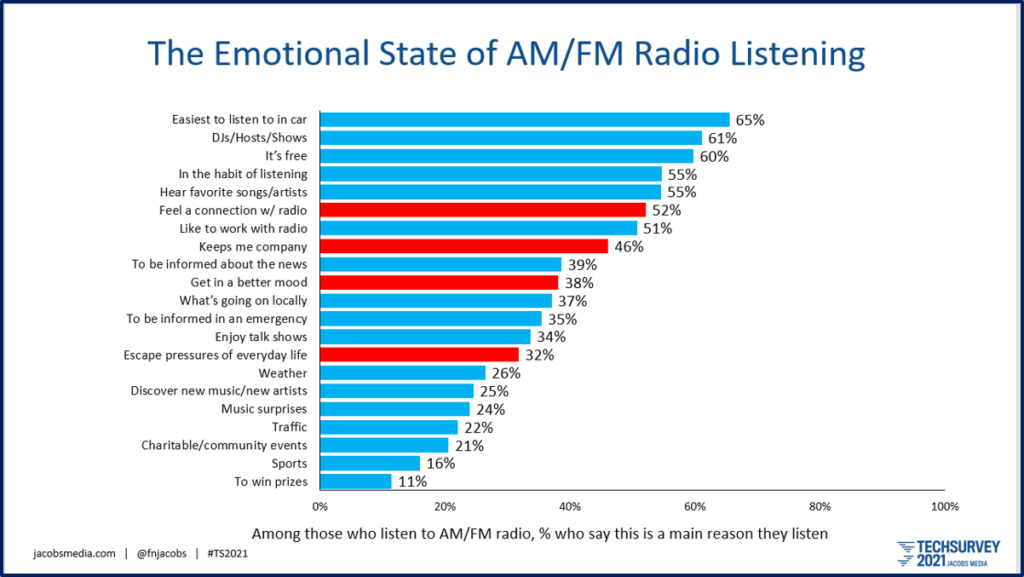
In red, the “Big 4” emotional drivers are highlighted:
- Engagement (“feel a connection with radio”)
- Companionship (“it keeps me company”)
- Mood elevation (“gets me in a better mood”)
- Escape (“to escape the pressures everyday life”)
While these “main reason” levels are impressive – all mentioned by nearly one-third or more – each has actually increased from last year’s study, when life as we knew it was “normal.”
 That suggests to me the emotional tug of radio (where there’s some sort of connection between a listener and a station) may have strengthened during the pandemic. We saw indications of this in our three waves of COVID research from last April, May, and October. But here we are, just after about one year of this crisis, and we see the toll it has taken, and where radio has been able to fill a need.
That suggests to me the emotional tug of radio (where there’s some sort of connection between a listener and a station) may have strengthened during the pandemic. We saw indications of this in our three waves of COVID research from last April, May, and October. But here we are, just after about one year of this crisis, and we see the toll it has taken, and where radio has been able to fill a need.
It makes you wonder why programmers and marketers don’t push those emotional hot buttons more often – in off-air marketing, but also in promos and positioners. But the fact is that it’s harder to craft creative around these values than it is to talk about “more music, less talk” and whatever decades of music we feature.
I think a lot about these emotional hot buttons when I listen to radio stations. And occasionally, I’ll hear a personality who “gets it” – who makes a connection with her audience. I’ve just never crystalized it until I read a think piece by Jonathan Halvorson, Global VP of Consumer Experience for Mondelēz International.
His premise? While personalization has been an effective marketing tool that is attractive to many consumers (think Spotify playlists, building your own cable bundles, or making your own Metallica logo), he envisions a marketing journey that is richer: empathy.
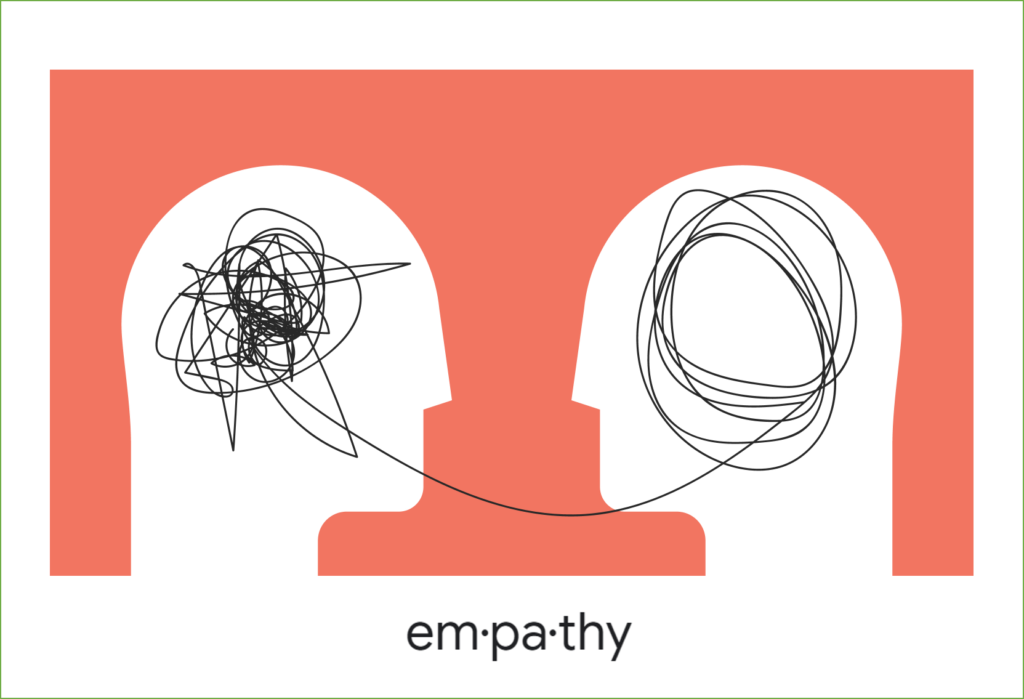
The dictionary definition is a simple one: the ability to understand and share the feelings of another.
Halvorson takes it a step further, aspiring to create what he calls “empathy@scale” – a big idea that connects with a lot of people. In radio’s case, listeners.
When a radio station looks at its cume audience, there are obviously demographic commonalities,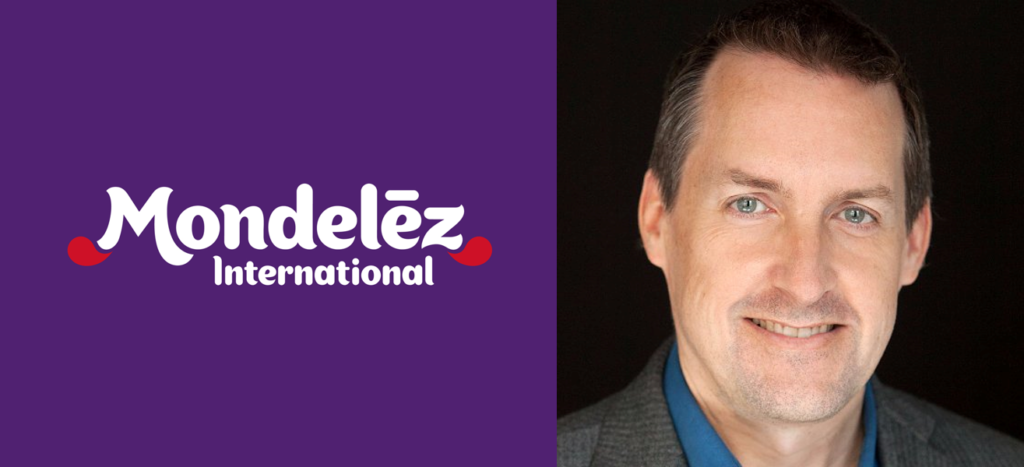 whether its gender, age, ethnicity, lifestyle, music tastes, or political leanings.
whether its gender, age, ethnicity, lifestyle, music tastes, or political leanings.
As Halvorson reminds us in a recent MediaPost profile, “People are more than the sum of their data points.” Especially while we’re all slogging through COVID.
Being smack in the middle of a shared experience – say, a global pandemic – creates an extremely target rich environment for creating an “empathy@scale” opportunity for a brand.
If you’re not familiar with Halvorson’s company – Mondelēz International – it helps to understand his context. They’re a massive confectionary food giant. That’s another way of saying “snack food.” In more than 150 countries with revenues north of $25 billion, Mondelēz is the biggest company of its kind.
And their brands?
We’re talking Oreo, Chips Ahoy!, Philadelphia (as in cream cheese), Ritz, Sour Patch Kids, and scores of others. So, if Halvorson can engineer “empathy @ scale” with cookies and crackers, imagine what a radio station could do.
In the MediaPost story – “Mondelēz: Empathy is the New Personalization” – Halvorson opens his playbook. I can’t tell you I understand all the references in the schematic below – you’d have to be in Halvorson’s office staring at his whiteboard – but you clearly understand how the play is run:
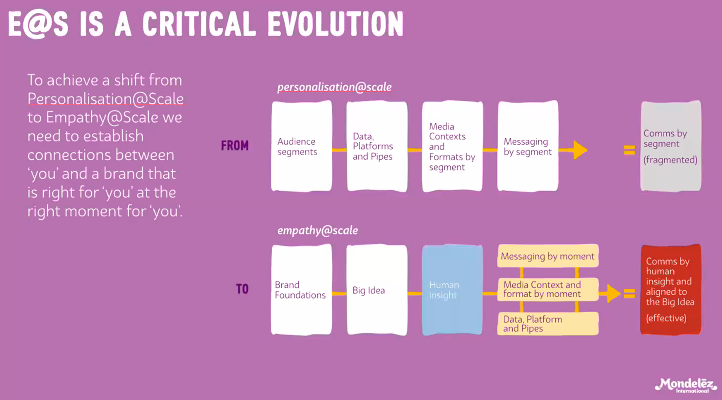
The stated goal:
“To achieve a shift from Personalization@Scale (P@S) to Empathy@Scale (E@S) we need to establish connections between ‘you’ and a brand that’s right for ‘you’ at the right moment for ‘you.'”
And with Oreo, we can see what this looks like. I blogged about one of the coolest personalization campaigns I’d ever seen late last year in a post called “How America’s Classic Cookie Keeps It Fresh (And How Your Radio Station Can, Too”). Oreo was offering brands (or consumers) the chance to economically design their own custom Oreo cookies.
A number of you took me up on it, producing your unique renditions of the classic cookie, right down to the filling, the colors, and even the sprinkles. But the true personalization was seeing your call letters – or your show – on Oreo cookies.
Look what came in the mail! @Oreo pic.twitter.com/7CTr64YAcb
— Big Jim OBrien (@wcsxjim) March 19, 2021
This “personalization@scale” is effective, of course. Who doesn’t want to see their name or logo on the world’s most popular cookie. But it lacks brand connection, an emotional bond, and that all-important moment in time.
Enter “empathy@scale,” a trickier but deeper aspiration because it is very much an “in the moment” thing. Those are the timely connective touch points brands need to look for.
Their “Stay Home, Stay Playful” campaign began its rollout in the Middle East and Africa (before scaling out to the rest of the company’s markets around the globe). COVID was the experience that defined the campaign’s moment in time.
Strong radio brands have the ability to achieve “empathy@scale” by looking for those moments, empathizing with their audience (or their advertisers!), and creating a moment that hits home.
I’ll leave you with this final quote from Jon Halvorson that very much sums up the challenge and the opportunity:
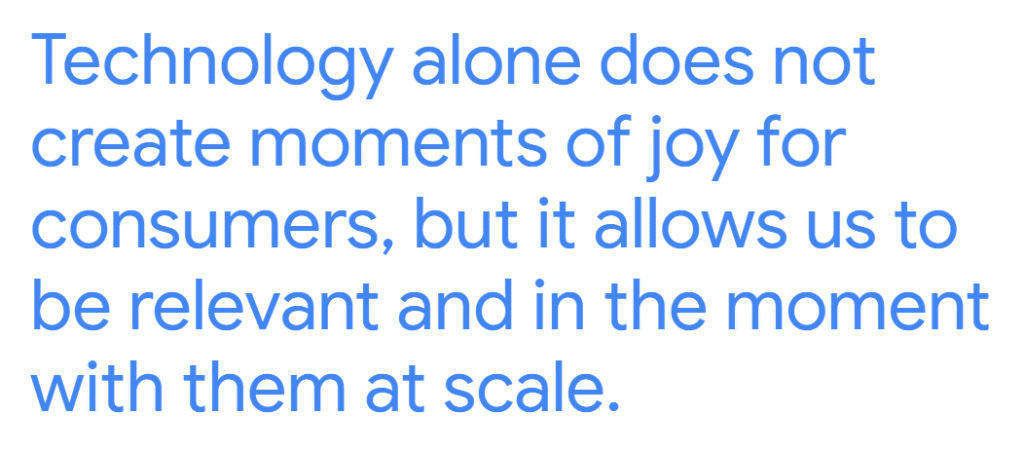
Timing IS everything.
- Media And Technology In 2025: Believe It Or Not! - April 18, 2025
- In Radio, You Just Never Know - April 17, 2025
- The Secret To Making A Great Podcast (And Great Radio) - April 16, 2025




Leave a Reply